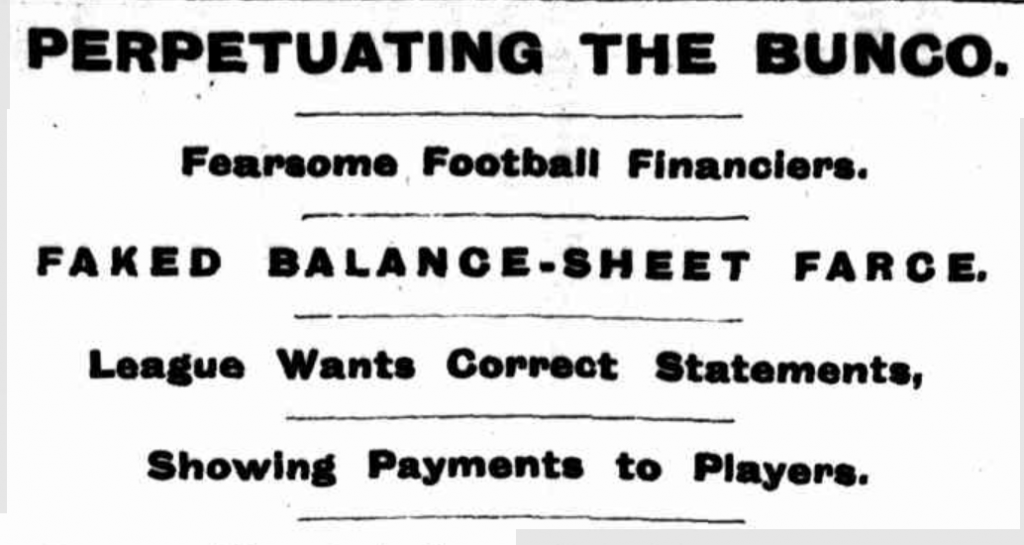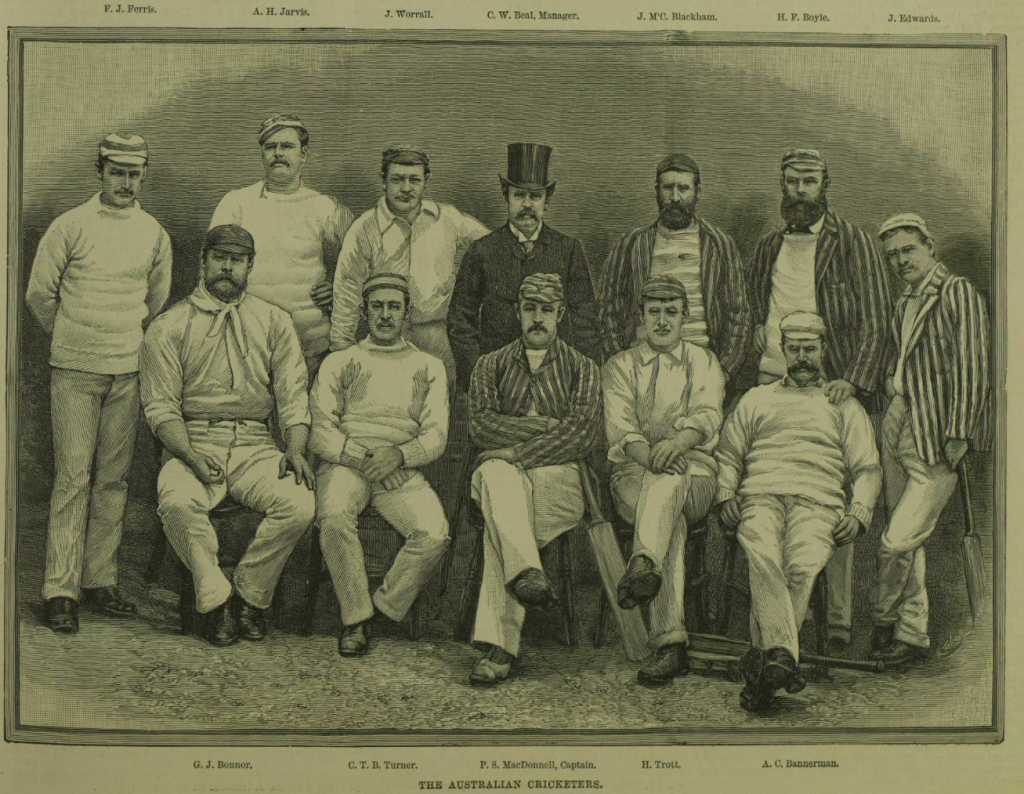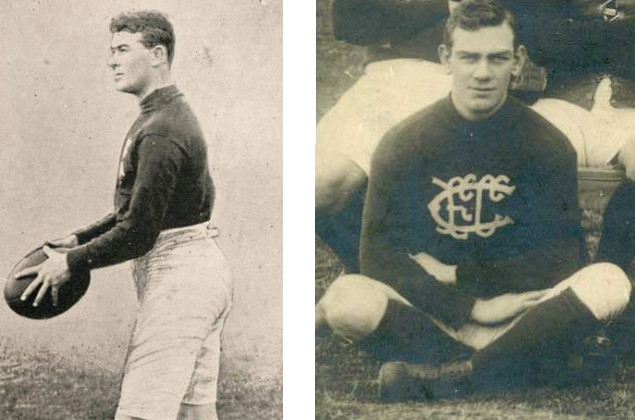Player revolts, coach sackings, payment controversies, betting scandals, creative accounting …sound familiar? Welcome to Australian Rules football 110 years ago.
In 1897 eight of the strongest Association clubs broke away to form the Victorian Football League (now the AFL). The initial constitution was updated in 1900 to explicitly prohibit player payments beyond expenses.
In the early part of the 20th century football had already enveloped Melbourne in its grip. The crowds were enormous. The 1908 grand final between Carlton and Essendon attracted 53,400 from a population of greater Melbourne of 549,200. To put this in context, a similar percentage of Melbourne’s current population is 500,000.
Clubs were generating significant revenue, but the players were still expected to play as amateurs. It was generally accepted that clubs were finding creative ways around the payment prohibition.

In 1909, Carlton were coming off 3 flags in a row but while they again qualified for the premiership play-offs, trouble was brewing. Their legendary coach Jack Worrall, former test cricketer and star footballer for Fitzroy in the pre-VFL days, had brought a rigid new discipline to the club. The exacting standards he imposed had paid handsome dividends but some of his players, when expected to train like professionals but play as quasi amateurs, were growing disenchanted. In modern parlance, despite his success, he had ‘lost the players’. Mid season he tendered his resignation. The Blues lost the grand final to South Melbourne by two points.

In 1910 even more drama followed. Carlton again faced up to South Melbourne, this time in a semi-final. At the last minute three Carlton players, Alex ‘Bongo’ Lang, Doug Gillespie, and Doug Fraser, were withdrawn from the side following suspicions that they may have accepted bribes to ‘run a bye’.

Team mate George Bacquie had reported being approached and, along with a trainer, Snell, did some detective work for the club. A ‘certain city shopkeeper’ told Bacquie that he had ‘three or four men playing in the last final match, and that he had paid each of them £50 after the match’.
A league investigation cleared Gillespie but found Lang and Fraser guilty. They were suspended for 5 years. The investigation brought a number of players forward from different clubs who acknowledged that they had been approached, but had resisted inducements offered to under perform.
The reported bribery attempts seem to be aimed at players due to play South Melbourne and gossip centred around wealthy South Melbourne president Henry Skinner. The local paper came to his defence.
There are people who talk at large about the huge sums Skinner stood to win over the South Melbourne football team. Such people know nothing;. Skinner does not bet on horses, and he is far too astute to bet on men.
During the investigation Skinner was forced to defend himself. He admitted that he ‘had promised the 23 men on the South Melbourne training-list £10 per man if the club succeeded in getting into the final four.‘ He pledged that he ‘knew nothing‘ of the shopkeeper who was the centre of the bribery allegations.
Nothing was proved and the source of the bribes wasn’t identified.
Clearly there was some significant betting going on and, as various sports have discovered, where gambling is involved the potential for corruption is not far behind. Despite the sham of amateurism, players were disgruntled at receiving inconsistent financial reward, providing fertile ground for offers from gamblers.
Whether the betting scandal lead directly to sanctioned player payments is not explicit, but it is likely that it was an influence. Rule 29, aimed at enforcing the players’ amateur status, had proved impossible to enforce and there was increasing pressure from clubs to bring player payments into the open.
On 12 May 1911 the contentious rule 29 was overturned, with the support of all but the genuinely amateur clubs, University and Melbourne. The age of professional football had begun.
Notes
For more references see our page on the 1909 grand final in our Australian Rules research guide
Henry Skinner and Jack Worrall have entries in the Australian Dictionary of Biography
The newspapers covered the bribery scandal. If you use keywords such as football scandal and then narrow decade/year/month to September 1910, you will find a range of reports.
If you broaden your search to the 1900-1909 decade you will find stories on previous incidents such as the Association case and the allegations against St Kilda.
Tony De Bolfo’s excellent book Out of the blue : defining moments of the Carlton Football Club includes a chapter on the bribery scandal.


Are Alex Lang and Darcy Lang (current Carlton midfielder/ forward) related? It would make for a great story.
Hi Anthony, It would be an interesting link, but I have not found anything to suggest they are related. However a Carlton dual premiership player who gave evidence at the time was Jim Marchbank, great uncle to current player Caleb. http://nla.gov.au/nla.news-article10465780
Regards
Andrew